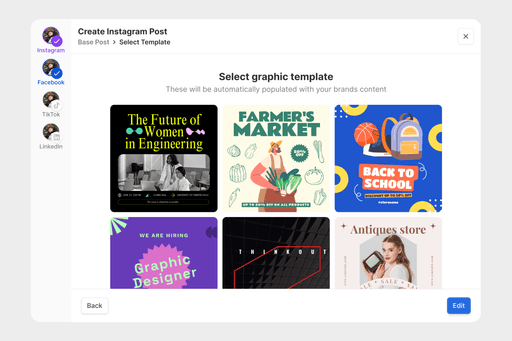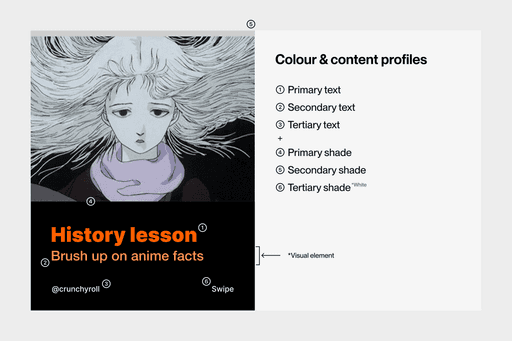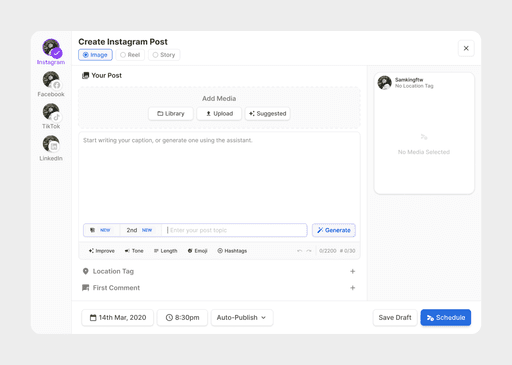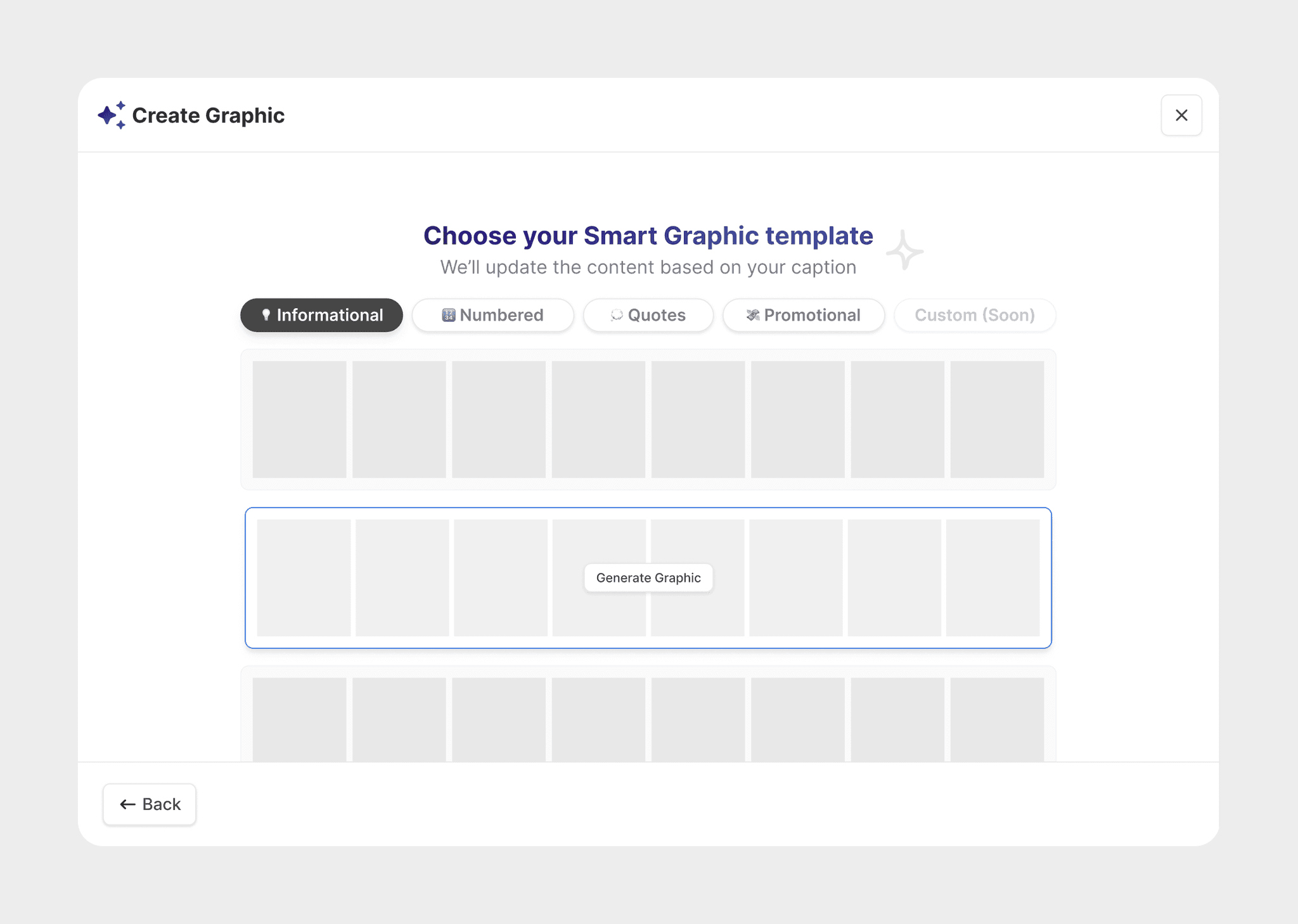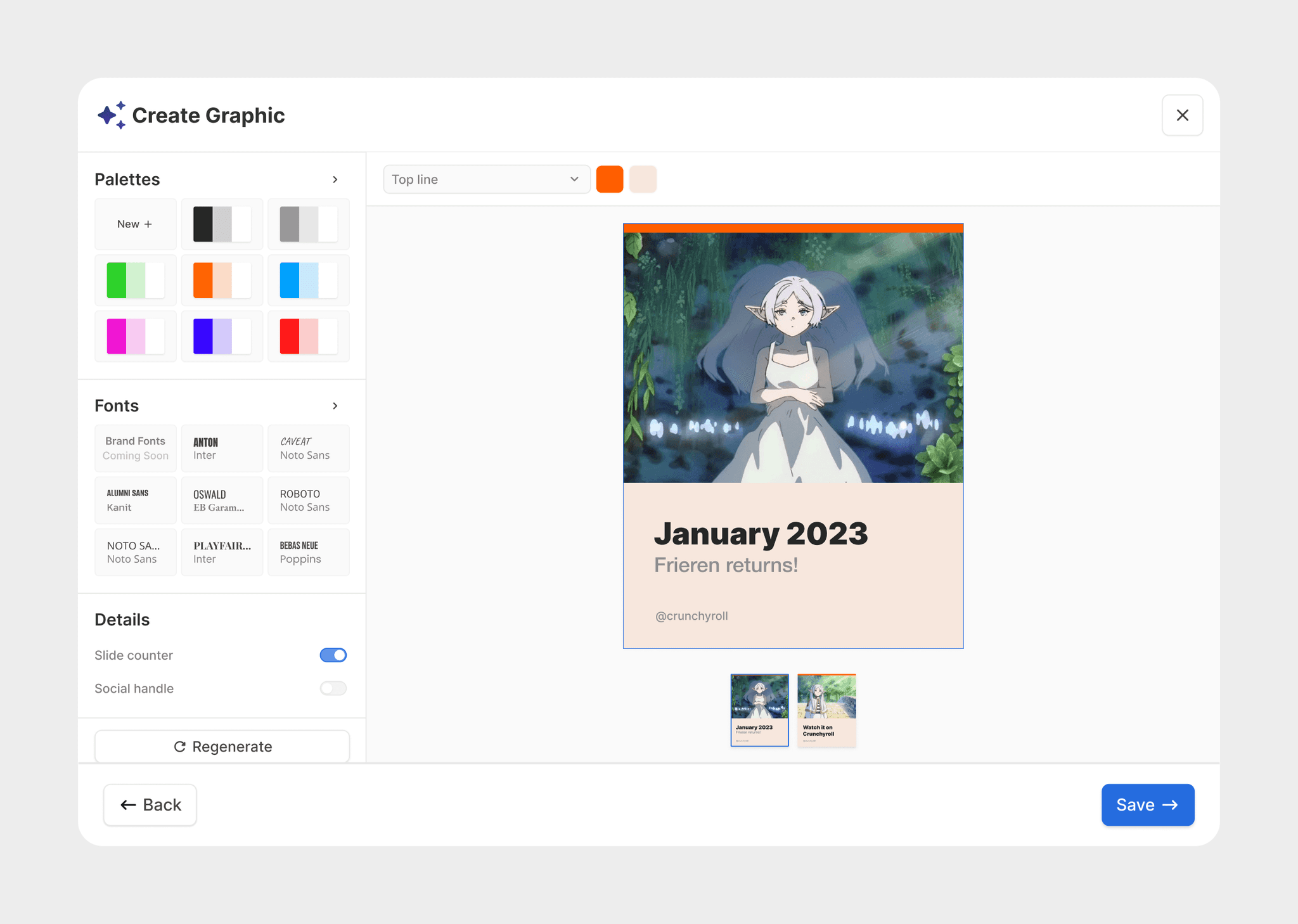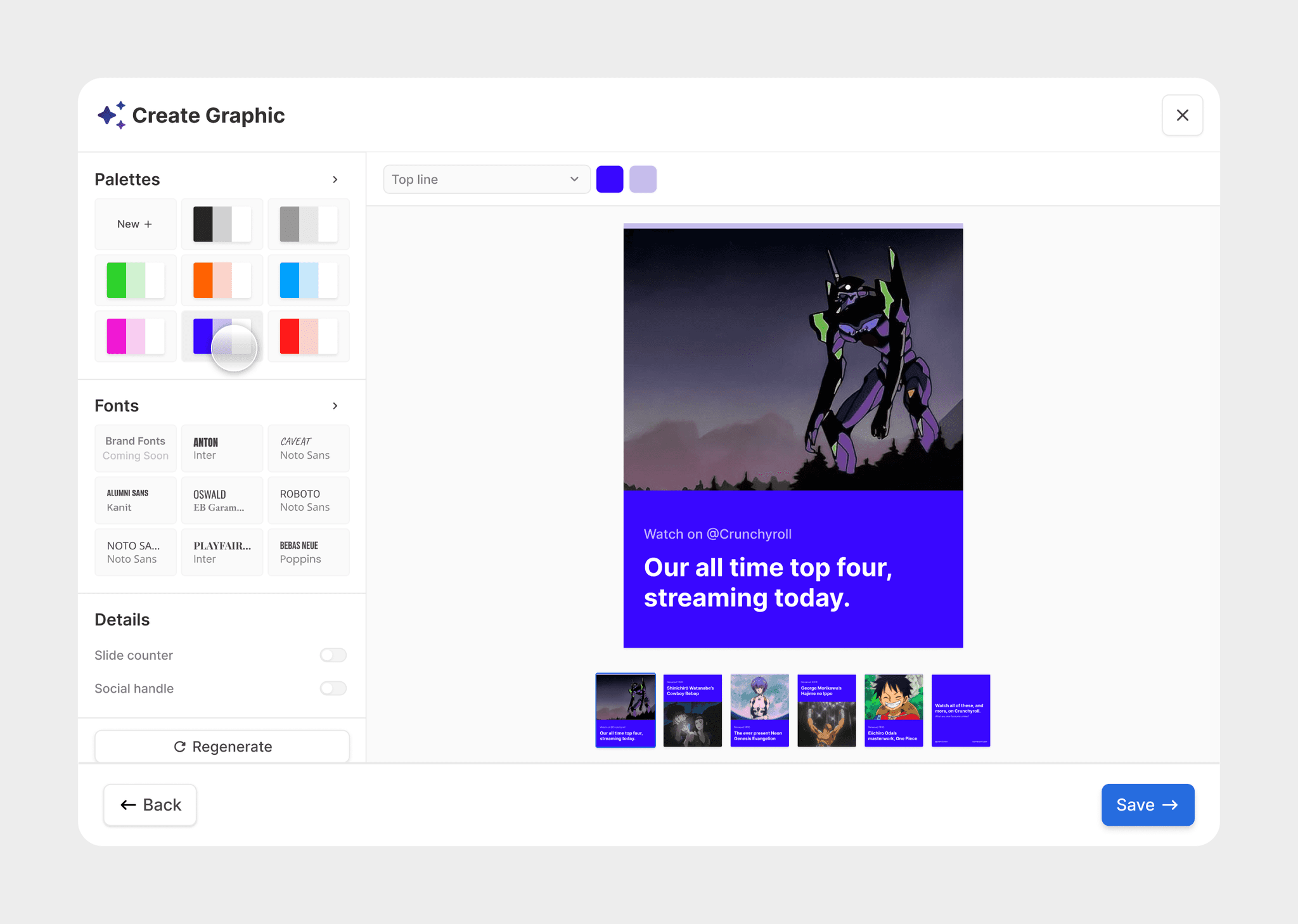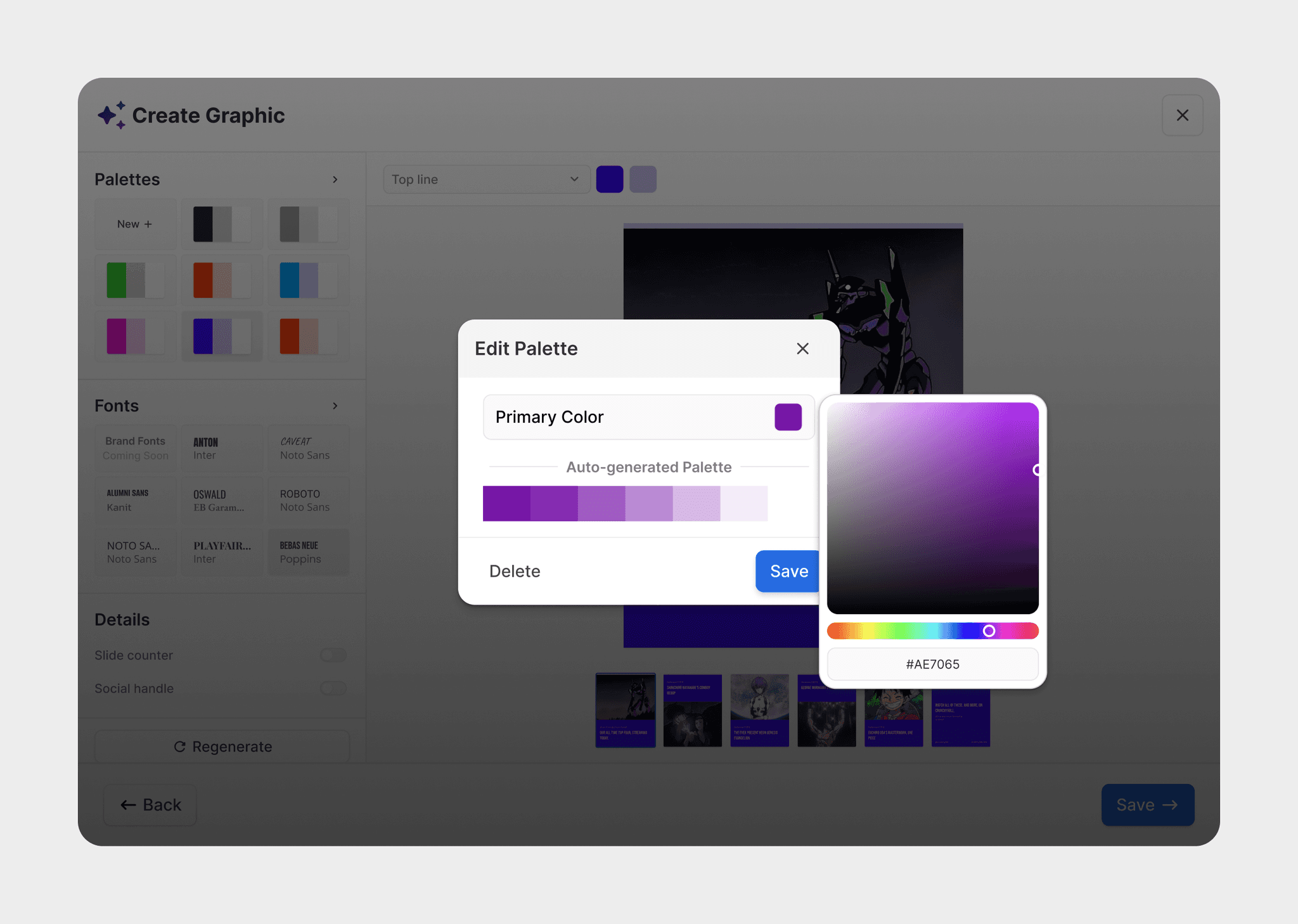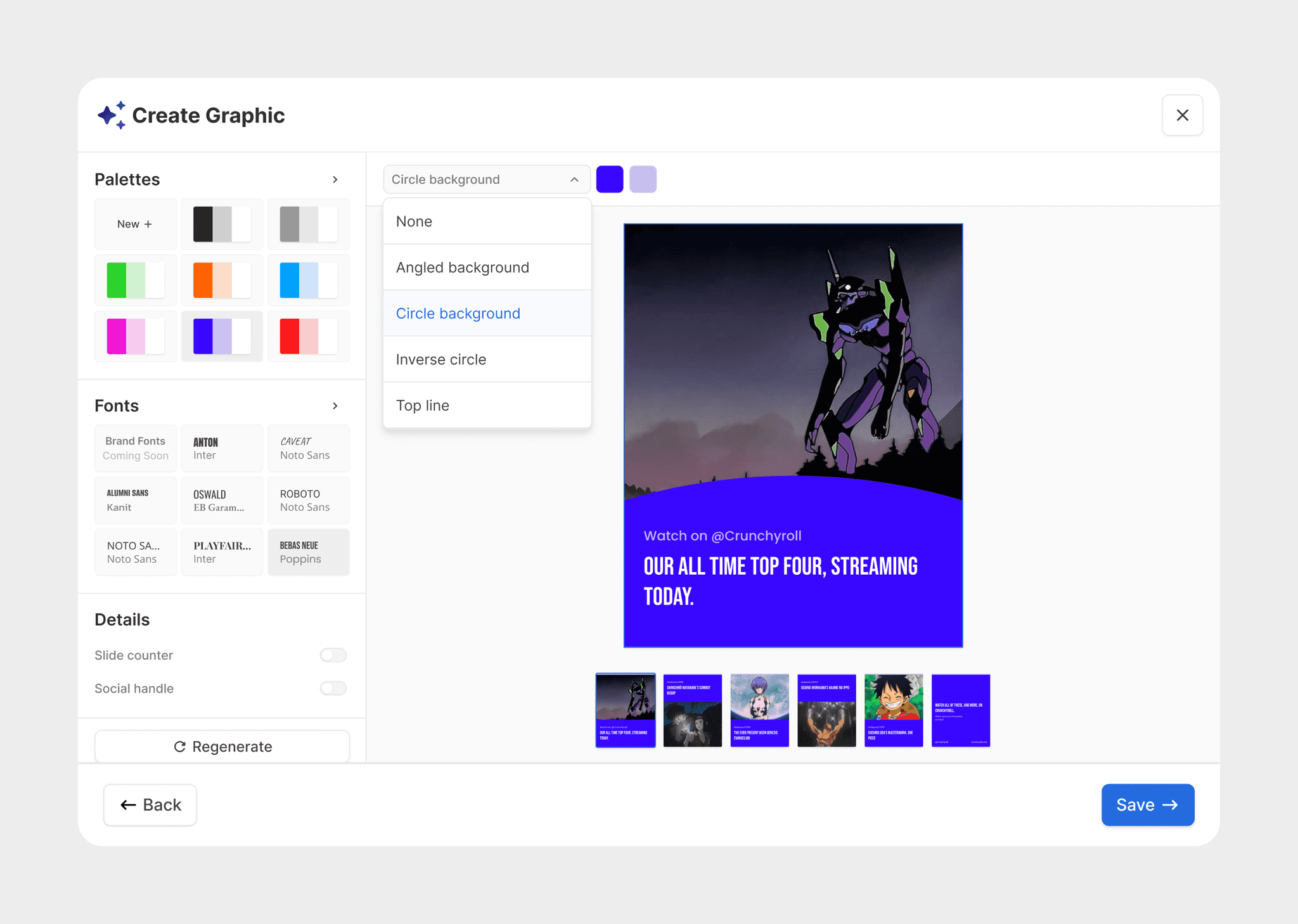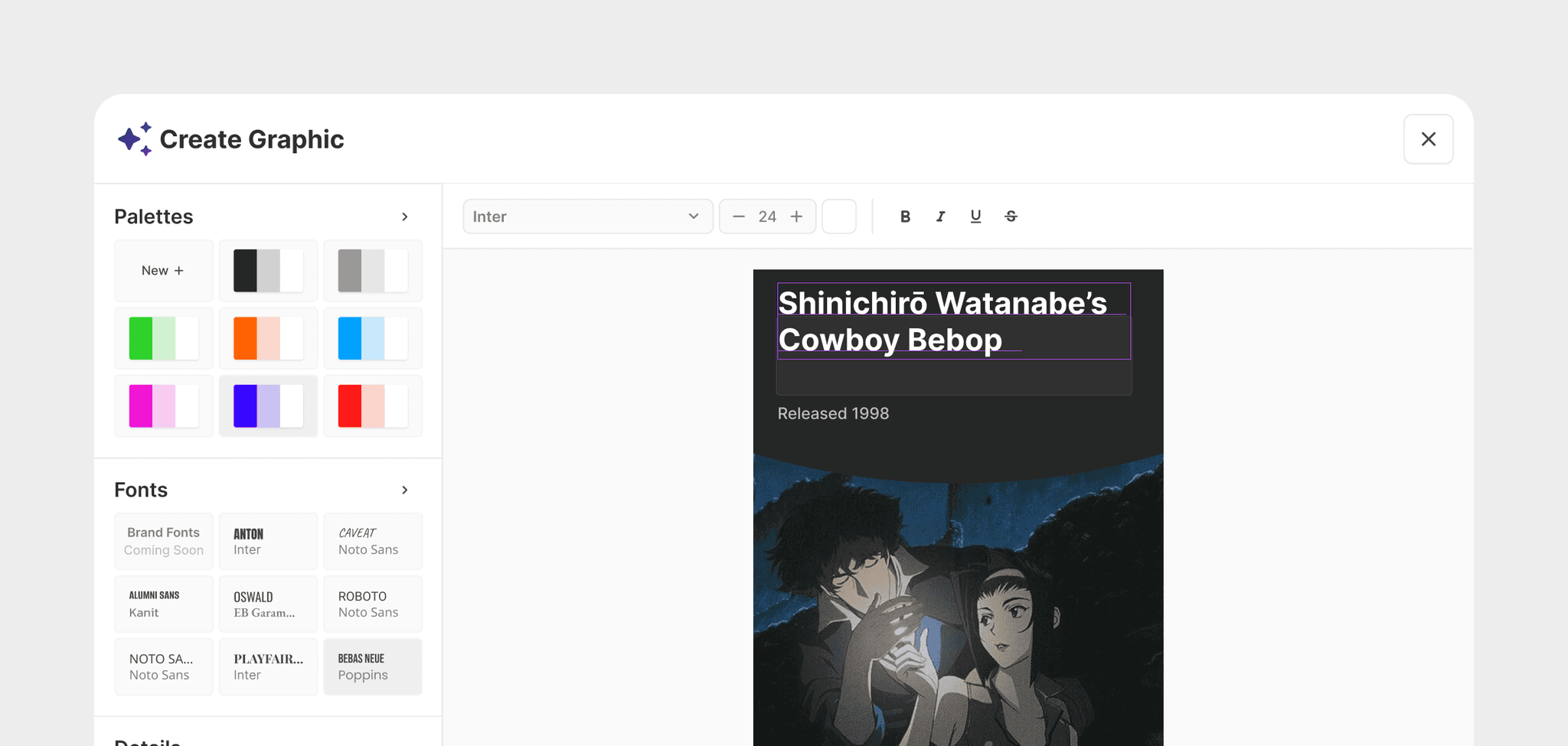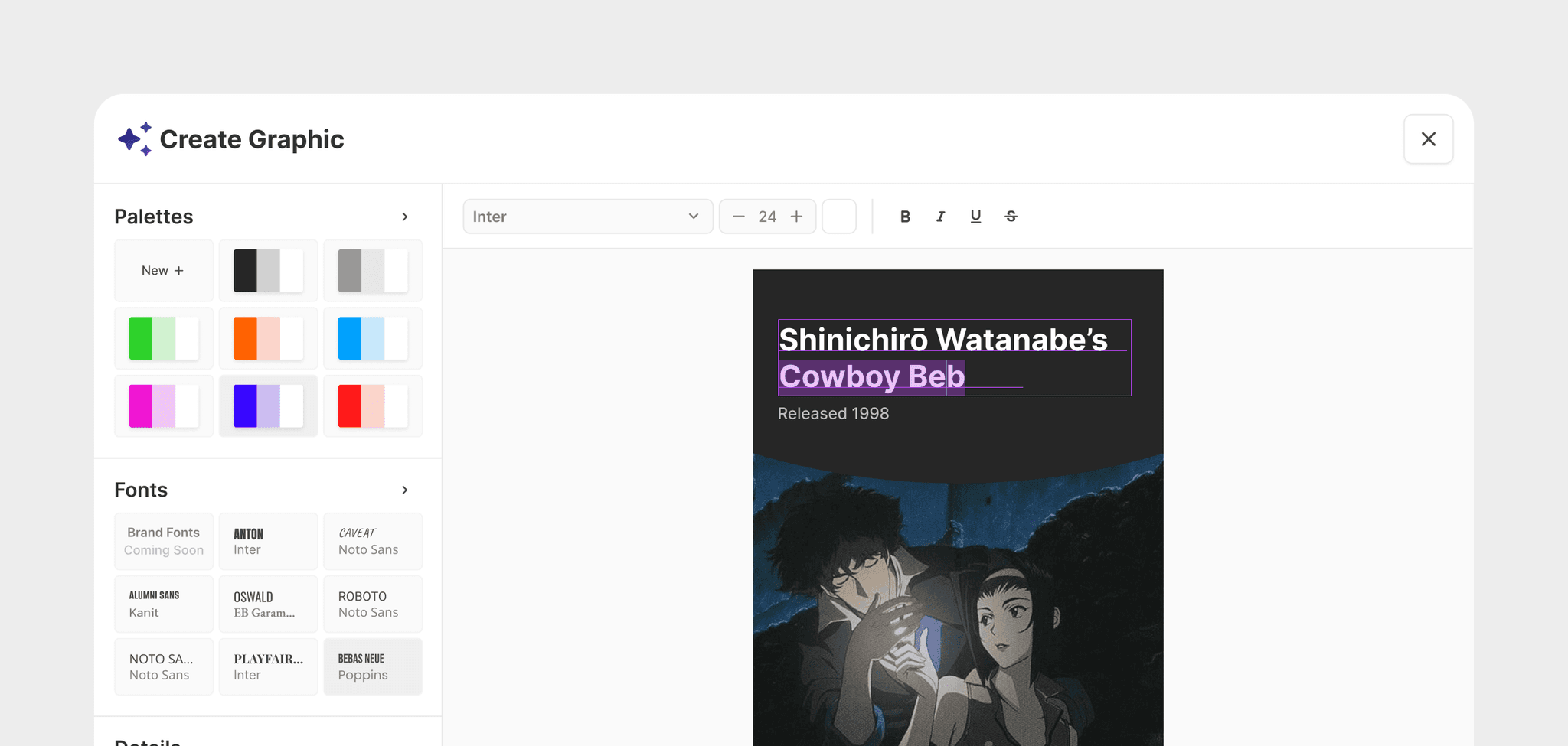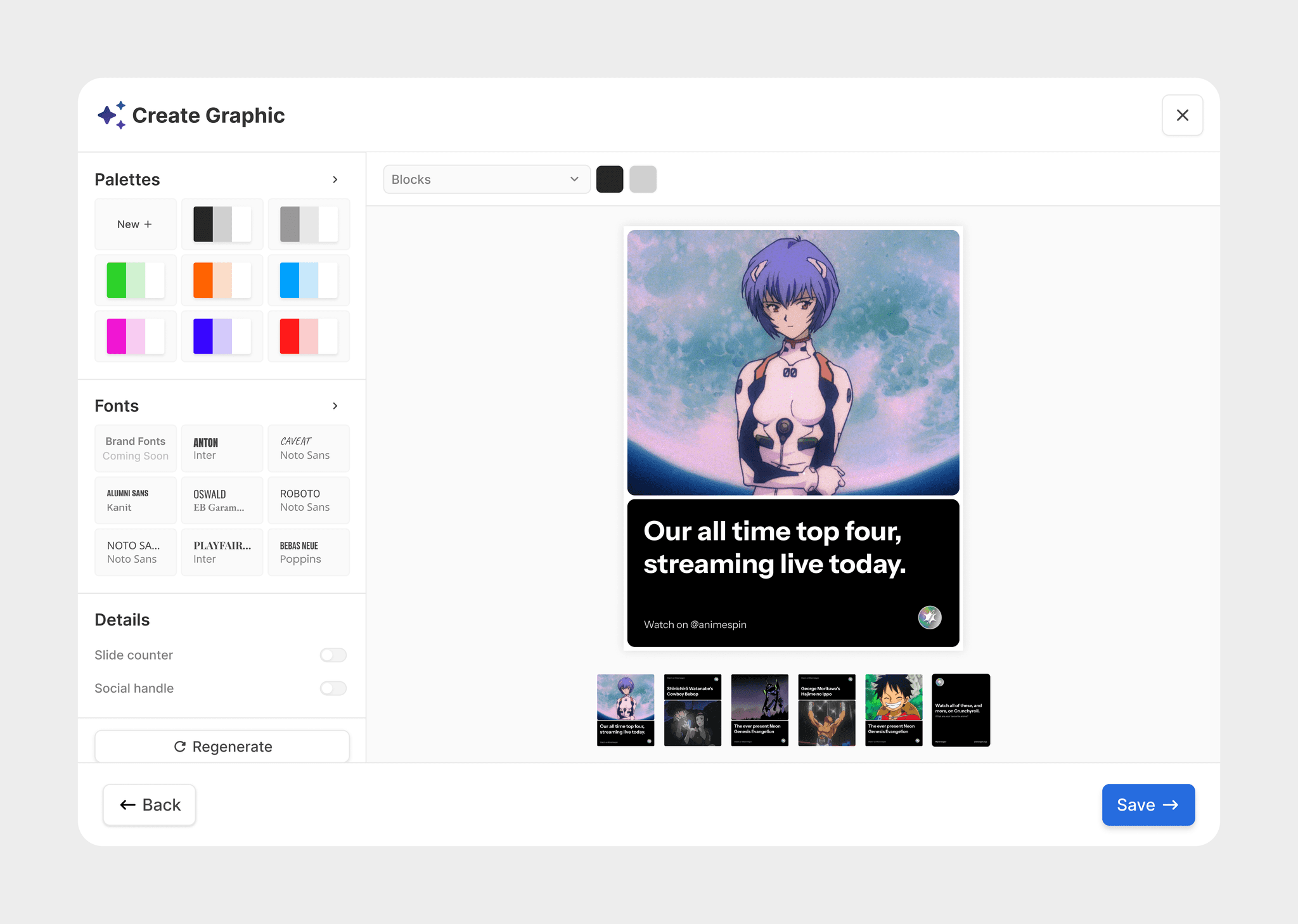
Flick
Generate social media content from a caption.
Role
Staff product designer
2023 → 2024
Teammates
Engineers (4)
Founders (2)
Customer support
Marketing manager
Key tasks
User interviews
Brainstorming
Usability testing
Design system
Introduction
Flick pivoted from hashtag search to AI-driven content creation, utilising LLM's to save small business owners and social media marketers time when managing their social channels. Over the last two years I led a number of 0-to-1, E2E initiatives at Flick, the overarching product was called Iris.
One of my major contributions was leading the design of a tool that utilised a pre-existing knowledge base to create brand conscious graphics for social media.
To be a success, the tool needed to meet the complex needs of small business owners, whilst being highly intuitive and simple to use.
Key Outcomes
Conversion: 41% of customers who utilised the graphic creation tool added something to the scheduler, of those 3.4% converted, which is 61% above average.
Time saver: Small business owners who used the graphic creation tool reported a high degree of satisfaction with the outputs, as well as considerable time and cost saving.
Journey
Techniques I used to build confidence in our idea.
01.
Interviewing customers to understand their content creation workflows.
During the sessions I explored participants working processes alongside them, asking clarifying and exploratory questions, and watching them create content in real time.
The primary takeaway was that this tool would be useful for small business owners, but might need further development to meet the needs of social media marketers.
02..
Encountering challenges with our planned Canva integration.
We had planned to partner with Canva and build a tool that integrated with their platform due to our customers familiarity with it, and because we thought working with them would be faster than building a bespoke solution.
Technical limitations were uncovered during mid-fidelity usability testing that made us take pause and reevaluate the feasibility of building our own solution. Testing did uncover customer excitement at the speed of the solution, and our barebones templates seemed to meet small business owners design expectations.
03..
Designing a system to enable our in-house solution quickly.
Our primary feature set was generation of brand specific graphic copy, the ability to control colours and fonts, moving key objects on the canvas, and ensuring graphic wide colour and font changes whilst retaining high visual quality.
We kept an organised house at Flick, with a detailed design system, the graphic creation tool added a considerable number of components to the system which required organisation and documentation.
04.
Responding to key metrics post launch.
We would keep a close eye on things after launch, we didn't notice any obvious cascading effects or negative interdependencies post launch, but we did respond to lower than expected activation.
We would frequently review customer experiences with the tool in Fullstory to help us prioritise feature implementation post beta.
Solutions
Techniques I used to build confidence in our idea.
01.
Graphic copy and imagery are generated using a caption.
A closer look at our caption generator, Iris uses the caption and the customers brand information to craft the perfect graphic.
02.
Templates come in a variety of shapes and sizes, you can do a lot with a little.
Although editing options are limited, partially by design and partially by a lack of time, you can easily create eye catching graphics that meet your communities standards.
03.
Bulk editing keeps things simple and intuitive.
Bulk editing options were the most popular, as intended, balancing control with a high degree of design quality.
04.
In-line editing grants more experienced users a greater level of control.
We did implement some inline editing capabilities which go a long way to enable a lot of personality inside our templates.


